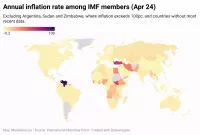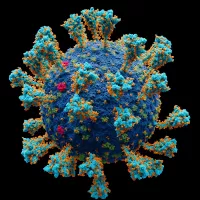The Republic of the Marshall Islands is an island nation located in the Micronesia region of the Northwestern Pacific Ocean, slightly west of the International Date Line and just north of the equator. Geographically, it's part of Oceania and is situated about halfway between Hawaii and Australia. The country comprises 29 coral atolls, which consist of about 1,156 individual islands and islets. The Marshalls are known for their strategic importance, having been a testing ground for nuclear weapons during the Cold War.
1904: Arrival and Research of Father A. Erdland
Father A. Erdland, a Catholic priest, began his research on Marshallese culture and language in Jaluit in 1904. Another missionary, Father H. Linckens, also visited the islands in this year.
March 31, 1906: German Direct Control
On March 31, 1906, the German government took direct control of the Marshall Islands, integrating them into the protectorate of German New Guinea.
1911: Father H. Linckens' Visit
Father H. Linckens visited the Marshall Islands again in 1911 for research purposes.
1912: Publication of Missionary Work
Father H. Linckens published a small work on Catholic missionary work and the people of the Marshall Islands in 1912.
September 29, 1914: Japanese Invasion of Enewetak
The Imperial Japanese Navy invaded Enewetak on September 29, 1914.
1914: Publication of Monograph on the Marshall Islands
In 1914, Father A. Erdland published a comprehensive 376-page monograph on the Marshall Islands, culminating his research during his stay from 1904 to 1914.
1914: Japanese Naval Administration Begins
In late 1914, the Japanese navy began administering the Marshall Islands.
1921: End of Japanese Naval Administration
The Japanese navy's administration of the Marshall Islands ended in 1921.
April 1922: Civilian Administration Established
The civilian South Seas Government established its headquarters in Palau in April 1922 to administer the Marshall Islands.
March 27, 1933: Japan's Withdrawal from League of Nations
On March 27, 1933, Japan announced its intention to withdraw from the League of Nations.
1935: Official Withdrawal from League of Nations
Japan officially withdrew from the League of Nations in 1935.
1939: Military Airfield Construction Begins
Construction of military airfields on Kwajalein, Maloelap, and Wotje Atolls began in 1939.
1940: Military Airfield and Seaplane Facility Construction
In 1940, military airfield construction continued, and seaplane facilities were built at Jaluit.
February 1, 1942: Marshalls-Gilberts Raids
The US Pacific Fleet conducted the Marshalls-Gilberts raids on February 1, 1942, marking the first American air raids on Japanese territory.
January 31, 1944: US Invasion of Marshall Islands
The United States invaded the Marshall Islands on January 31, 1944.
1946: Pacific Proving Grounds Established
From 1946 to 1958, the Marshall Islands became the Pacific Proving Grounds for US nuclear testing.
1946: Operation Crossroads
Operation Crossroads atomic bomb testing began in 1946 on Bikini Atoll after the forced evacuation of some residents.
1946: Nuclear Testing Begins
The United States began nuclear testing in the Marshall Islands in 1946.
1947: US Administration of Trust Territory
In 1947, the US began administering the Marshall Islands as part of the Trust Territory of the Pacific Islands under a UN agreement.
1952: "Mike" Hydrogen Bomb Test
The first hydrogen bomb, "Mike", was tested on November 1, 1952 (local date), at Enewetak atoll, causing significant fallout.
1953: Loan Ran Kein Publication Begins
The Marshallese language newspaper, Loan Ran Kein, began publication in 1953.
1954: Loan Ran Kein Publication Ends
The publication of Loan Ran Kein ceased in 1954.
1958: End of Pacific Proving Grounds
1958 marked the end of the Marshall Islands' use as the Pacific Proving Grounds.
1958: End of Nuclear Testing
In 1958, the United States concluded its nuclear testing program in the Marshall Islands after conducting 67 tests.
1960: Population Estimate
In 1960, the population of the Marshall Islands was estimated to be around 15,000.
1965: Congress of Micronesia
The US established the Congress of Micronesia in 1965 as a step towards greater self-governance for Pacific islands.
May 1, 1979: Recognition of Marshall Islands Constitution
On May 1, 1979, the United States formally recognized the constitution of the Marshall Islands and its new government.
May 1979: Independence and Self-Governance
The Marshall Islands gained independence in May 1979, with the US recognizing its constitution and president.
1979: Establishment of Mixed Parliamentary-Presidential System
The 1979 Constitution of the Marshall Islands established a mixed parliamentary-presidential system. This system outlines elections every four years with universal suffrage for citizens over 18. The 24 constituencies elect representatives to the Nitijela, the unicameral legislature. The President, who serves as both head of state and government, is elected by the 33 senators of the Nitijela. Notably, since the adoption of the constitution, four out of five presidents have been traditional paramount chiefs.
1980: The Marshall Islands Journal Begins Publication
The Marshall Islands Journal, a bilingual weekly newspaper, started publishing in 1980.
1983: Pacific Community Membership
In 1983, the Marshall Islands became a member of the Pacific Community (PC).
1986: Compact of Free Association Signed
The Marshall Islands signed the Compact of Free Association with the United States in 1986.
December 22, 1990: End of Trusteeship
The UN Security Council Resolution 683 on December 22, 1990, formally ended the trusteeship of the Marshall Islands.
1990: Marshallese Ship Registry Begins Operations
The Marshallese ship registry commenced operations in 1990.
August 9, 1991: Security Council Recommendation for UN Admission
On August 9, 1991, the UN Security Council issued Resolution 704, recommending the admission of the Marshall Islands to the United Nations.
September 17, 1991: General Assembly Approval of UN Membership
The UN General Assembly formally approved the Marshall Islands' membership on September 17, 1991, through Resolution 46/3. The nation's voting record within the UN often aligns with that of the United States.
1991: Establishment of the Republic of Marshall Islands Sea Patrol
In 1991, the Republic of Marshall Islands established its Sea Patrol, a division of the Marshall Islands Police, and began operating the patrol vessel RMIS Lomor. The vessel's missions are restricted to civilian purposes.
1991: United Nations Membership
The Marshall Islands joined the United Nations as a member state in 1991.
1993: Establishment of Apostolic Prefecture
Pope John Paul II established the Apostolic Prefecture of the Marshall Islands in 1993, headquartered at the Cathedral of the Assumption in Majuro.
1993: Rising Sea Levels and Climate Change Threat
Since 1993, the sea level around the Pacific islands has been rising at a rate of 0.13 inches per year, exceeding twice the global average. This poses a significant threat to the Marshall Islands, with increased typhoon intensity and potential permanent flooding in areas like Kwajalein, Ebeye, and Majuro atoll.
1994: Number of Schools
During the 1994-1995 school year, the Marshall Islands had 103 elementary schools and 13 secondary schools.
1995: Number of Private Schools
There were 27 private elementary schools and one private high school operating in the 1994-1995 school year.
1999: Tuna Loining Plant Opens
A tuna loining plant employing over 400 people opened in 1999.
1999: Compact Payments Concluded
In 1999, certain financial payments under the Compact of Free Association concluded.
1999: Overthrow of Aristocratic Government
In 1999, the aristocratic government of the Marshall Islands, led by Imata Kabua, was overthrown due to allegations of political corruption. This led to the rise of Kessai Note, a commoner, marking a significant shift in the country's political landscape.
1999: United Democratic Party Victory
The United Democratic Party won the 1999 parliamentary election and formed the government.
2005: Tuna Loining Plant Closes
The tuna loining plant closed in 2005 after attempts to convert it to tuna steak production failed.
2007: Experimentation with Coconut Oil as Fuel
In 2007, the Marshall Islands began experimenting with coconut oil as a diesel fuel alternative.
2007: Joining the International Labour Organization
The Marshall Islands joined the International Labour Organization in 2007, agreeing to align its labor laws with international standards.
2008: First Olympic Representation
The Marshall Islands were represented at the Olympic Games for the first time in 2008, at the Beijing Olympics.
2008: Solar Home Systems Installed
Two 100-Wp solar home systems were installed on 420 homes on Ailinglaplap Atoll in 2008.
2009: Largest Solar Power Plant in the Pacific
A 57 kW solar power plant, the largest in the Pacific at the time, was installed in 2009.
2010: Land Scarcity and Burial Practices
Due to limited land availability in 2010, the Marshallese faced challenges with burial practices. A solution developed involved using double graves to maximize the use of available land for burials.
2010: Marshallese Migration to the US
The 2010 US Census revealed a significant Marshallese migration to the United States, with over 4,000 residing in Arkansas and over 7,000 in Hawaii. This migration pattern reflects ongoing movement since the late 1980s.
2010: Baseline for GHG Emission Reduction Pledges
The year 2010 serves as the baseline for the Marshall Islands' government pledges to reduce greenhouse gas (GHG) emissions.
October 2011: Establishment of Shark Sanctuary
In October 2011, the Marshall Islands government established the world's largest shark sanctuary, encompassing nearly 2,000,000 square kilometers of ocean. This measure aimed to protect sharks by banning shark fishing and mandating the release of by-catch within the designated zone, although its enforceability has been questioned.
2012: Silver Medal in Micronesian Games
In 2012, the Marshall Islands won a silver medal in the Micronesian Games for softball/baseball.
2013: Economic Data
In 2013, the Marshall Islands' exports were valued at approximately $53.7 million, while imports were estimated at $133.7 million.
2013: US Financial Assistance Agreement
The US committed to providing $57.7 million annually to the Marshall Islands until 2013, under the Amended Compact of Free Association.
April 28, 2015: Seizure of MV Maersk Tigris
On April 28, 2015, the Iranian navy seized the MV Maersk Tigris, a Marshall Island-flagged vessel, near the Strait of Hormuz. The ship, chartered by Germany's Rickmers Ship Management and carrying no special cargo or military weapons, was reportedly controlled by the Iranian Revolutionary Guard. The incident escalated regional tensions amid the Saudi-led coalition attacks in Yemen, prompting the US to dispatch military vessels and aircraft in response to a distress call. All 34 crew members were detained. The US reviewed its defense obligations to the Marshall Islands following the incident and condemned the firing of shots at the ship's bridge.
May 2015: Planned Release of MV Maersk Tigris
In May 2015, reports indicated that Tehran planned to release the MV Maersk Tigris after the payment of a penalty.
2015: Seizure of MV Maersk Tigris
Following the 2015 seizure of the MV Maersk Tigris, the US clarified its defense obligations to the Marshall Islands regarding foreign-owned vessels.
2015: Majuro Tuna Transshipment and Processing
In 2015, Majuro was the world's busiest tuna transshipment port and a significant tuna processing center.
2015: Economic Expansion
The International Monetary Fund reported that the Marshall Islands' economy expanded by about 0.5 percent in Fiscal Year 2015, due to improvements in the fisheries sector.
January 2016: Election of Hilda Heine as First Female President
Hilda Heine was elected as the first female president of the Marshall Islands in January 2016, following a vote of no confidence against the previous president, Casten Nemra, who had served only two weeks.
2016: Projected Economic Growth
Growth was projected to rise to about 1.5 percent and inflation to about 0.5 percent in FY2016.
2016: New Radio Station
Power 103.5, a new radio station, began broadcasting in 2016.
2016: GDP and Growth Rate
The Marshall Islands' GDP in 2016 was an estimated $180 million, with a real growth rate of 1.7% and a GDP per capita of $3,300.
March 2017: Joint Statement on Human Rights Violations in West New Guinea
In March 2017, during the 34th regular session of the UN Human Rights Council, Vanuatu delivered a joint statement on behalf of the Marshall Islands and other Pacific nations. The statement raised concerns about human rights violations in Western New Guinea, a territory occupied by Indonesia since 1963, and requested a report from the UN High Commissioner for Human Rights. Indonesia rejected these allegations.
2017: Second Largest Ship Registry
By 2017, the Marshallese ship registry had become the second largest in the world.
February 2018: Recognition of Cryptocurrency as Legal Tender
In February 2018, the Marshall Islands became the first country globally to recognize its own cryptocurrency, the Sovereign, as legal tender. This pioneering move positioned the nation at the forefront of digital currency adoption.
2018: Cryptocurrency Plans
In 2018, the Marshall Islands announced its intention to create a new cryptocurrency as legal tender.
2018: Sovereign Cryptocurrency
In 2018, the Marshall Islands became the first country to issue its own cryptocurrency, the "Sovereign," and make it legal tender.
2019: Trade Agreement with Taiwan
A bilateral trade agreement was signed between the Marshall Islands and Taiwan in 2019.
January 2020: Election of David Kabua as President
David Kabua, son of the founding president Amata Kabua, was elected as the new President of the Marshall Islands in January 2020, succeeding Hilda Heine after she lost a vote.
2020: Per Capita CO2 Emissions Measurement
In 2020, the per capita CO2 emissions in the Marshall Islands were measured at 2.56 tons.
2020: Tokyo Olympics Participation
The Marshall Islands participated in the 2020 Tokyo Olympics, represented by two swimmers.
February 2021: Withdrawal from the Pacific Islands Forum
In February 2021, the Marshall Islands, along with Kiribati, Nauru, and the Federated States of Micronesia, withdrew from the Pacific Islands Forum following a dispute over the election of the secretary-general.
September 2021: Religious Demographics
In September 2021, the census revealed that about 96.2% of the Marshall Islands population identified with Christian denominations, with major groups including the United Church of Christ - Congregational, Assemblies of God, Catholic Church, Church of Jesus Christ of Latter-day Saints, Full Gospel Church, and Bukot nan Jesus.
2021: Census and Population Distribution
The 2021 census recorded 42,418 residents in the Marshall Islands, with 23,156 (54.6%) residing on Majuro. A majority (77.7%) lived in urban areas, primarily Majuro or Ebeye. This excludes natives who relocated, often to the US under the Compact of Free Association. For instance, about 4,300 Marshallese reside in Springdale, Arkansas.
2023: Future of US Financial Assistance
After 2023, a trust fund will begin providing annual payouts to the Marshall Islands.
2023: Trade Agreement Approval
In 2023, the trade agreement between the Marshall Islands and Taiwan was approved.
2023: Compact of Free Association Extended
The Compact of Free Association between the Marshall Islands and the United States, set to expire in 2023, was renewed for another 20 years.
2025: Targeted GHG Emission Reduction
The Marshall Islands aims to achieve a 32% reduction in GHG emissions by 2025, compared to 2010 levels.
2030: Targeted GHG Emission Reduction
The government plans a further reduction to 45% of GHG emissions by 2030, based on 2010 levels.
2035: Targeted GHG Emission Reduction
By 2035, a 58% reduction in GHG emissions compared to 2010 is the targeted goal.
2050: Net-Zero Emission Target
The Marshall Islands has pledged to achieve net-zero emissions by 2050.
Mentioned in this timeline

Marshalls is an American chain of off-price department stores owned...
Cryptocurrency is a digital currency operating on a decentralized network...
Germany officially the Federal Republic of Germany is a Western...

The Catholic Church the largest Christian church globally with over...

Inflation in economics signifies an increase in the average price...
Japan is an East Asian island country situated in the...
Trending
30 days ago Rashee Rice Limited in Practice; Mahomes Full Participant Before Chiefs-Cowboys Game

21 days ago Tim Allen Returns to Stand-Up: Fresno Performance at Warnors Theatre Announced

7 months ago Bryan Mbeumo transfer battle: Manchester United, Arsenal, and Newcastle vie for signature.

8 months ago Maury Povich reflects on media; Connie Chung honored and encouraged to write memoir.

COVID- testing is essential for identifying SARS-CoV- infections and tracking the pandemic Two primary types exist molecular tests detect the...

24 days ago Joseph Quinn's 'Stranger Things' impact, 'Master of Puppets' fame, and 'Pillion' BIFA win.
Popular

Tucker Carlson is an American conservative political commentator known for...

XXXTentacion born Jahseh Dwayne Ricardo Onfroy was a controversial yet...

Ben Shapiro is a prominent American conservative political commentator media...

Candace Owens is an American conservative political commentator and author...

William Franklin Graham III commonly known as Franklin Graham is...

Ursula Gertrud von der Leyen is a prominent German politician...